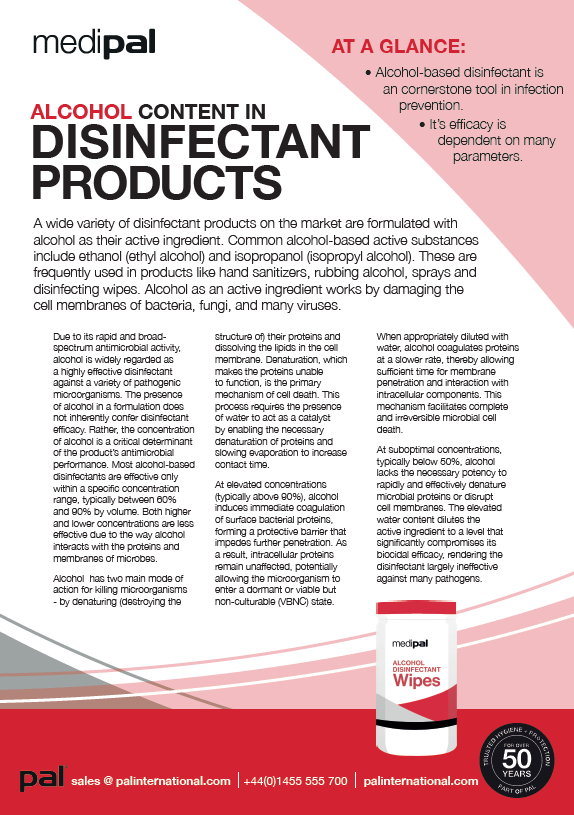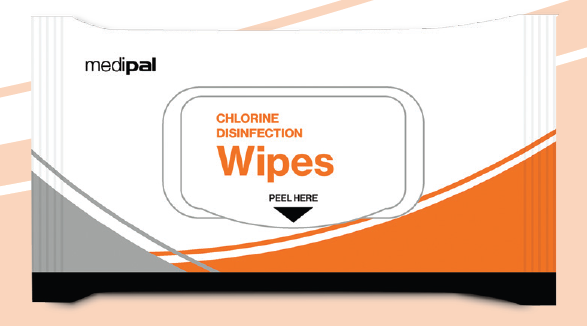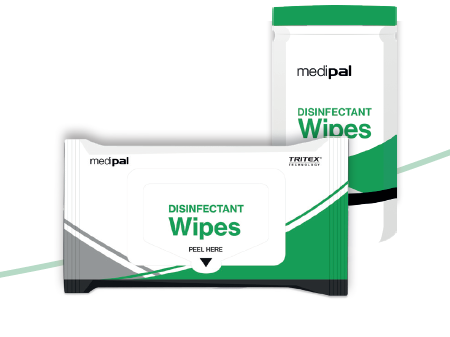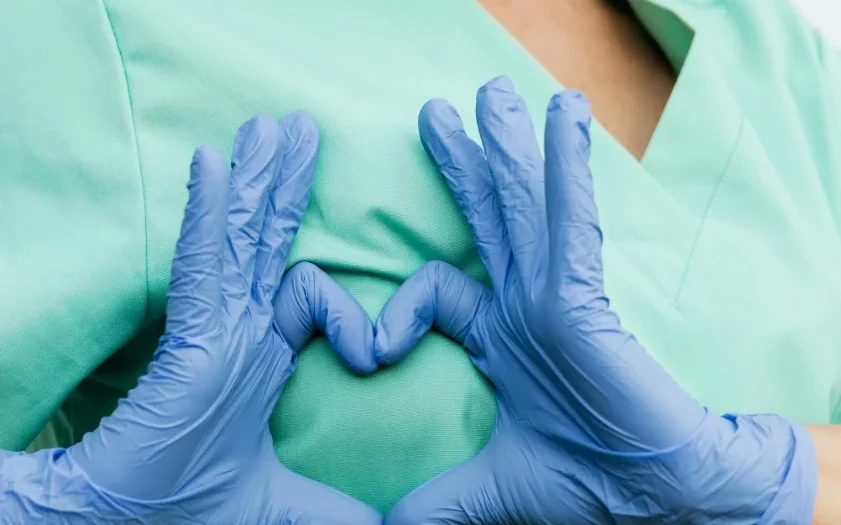 A wide variety of disinfectant products on the market are formulated with alcohol as their active ingredient. Common alcohol-based active substances include ethanol (ethyl alcohol) and isopropanol (isopropyl alcohol). These are frequently used in products like hand sanitizers, rubbing alcohol, sprays and disinfecting wipes. Alcohol as an active ingredient works by damaging the cell membranes of bacteria, fungi, and many viruses.
A wide variety of disinfectant products on the market are formulated with alcohol as their active ingredient. Common alcohol-based active substances include ethanol (ethyl alcohol) and isopropanol (isopropyl alcohol). These are frequently used in products like hand sanitizers, rubbing alcohol, sprays and disinfecting wipes. Alcohol as an active ingredient works by damaging the cell membranes of bacteria, fungi, and many viruses.
AT A GLANCE:
Alcohol-based disinfectant is a cornerstone tool in infection prevention.
It’s efficacy is dependent on many parameters.
Due to its rapid and broad-spectrum antimicrobial activity, alcohol is widely regarded as a highly effective disinfectant against a variety of pathogenic microorganisms. The presence of alcohol in a formulation does not inherently confer disinfectant efficacy. Rather, the concentration of alcohol is a critical determinant of the product’s antimicrobial performance. Most alcohol-based disinfectants are effective only within a specific concentration range, typically between 60% and 90% by volume. Both higher and lower concentrations are less effective due to the way alcohol interacts with the proteins and membranes of microbes.
Alcohol has two main mode of action for killing microorganisms – by denaturing (destroying the structure of) their proteins and dissolving the lipids in the cell membrane. Denaturation, which makes the proteins unable to function, is the primary mechanism of cell death. This process requires the presence of water to act as a catalyst by enabling the necessary denaturation of proteins and slowing evaporation to increase contact time.
At elevated concentrations (typically above 90%), alcohol induces immediate coagulation of surface bacterial proteins, forming a protective barrier that impedes further penetration. As a result, intracellular proteins remain unaffected, potentially allowing the microorganism to enter a dormant or viable but non-culturable (VBNC) state.
When appropriately diluted with water, alcohol coagulates proteins at a slower rate, thereby allowing sufficient time for membrane penetration and interaction with intracellular components. This mechanism facilitates complete and irreversible microbial cell death.
At suboptimal concentrations, typically below 50%, alcohol lacks the necessary potency to rapidly and effectively denature microbial proteins or disrupt cell membranes. The elevated water content dilutes the active ingredient to a level that significantly compromises its biocidal efficacy, rendering the disinfectant largely ineffective against many pathogens. Such formulations may fail to meet efficacy standards like EN 1276 or EN 13727.
A 70% alcohol concentration is considered optimal for disinfection due to the presence of water, which slows evaporation, prolongs surface contact time, and facilitates deeper penetration into microbial cell membranes. This allows the alcohol to effectively denature and coagulate proteins throughout the entire cell structure, resulting in complete and irreversible microbial inactivation.
Health authorities such as the Centres for Disease Control and Prevention (CDC) and the World Health Organization (WHO) recommend alcohol concentrations between 60% and 90% for effective hand and surface disinfection. Empirical studies and international guidelines consistently identify the 60–90% range as optimal for achieving broad-spectrum antimicrobial efficacy.
Variations in antimicrobial efficacy exist among different alcohols used in disinfectant formulations. For instance, isopropanol demonstrates reduced virucidal activity compared to ethanol against certain non-enveloped viruses, such as poliovirus, due to differences in protein denaturation and lipid solubility mechanisms.
An important consideration in evaluating alcohol based disinfectants is the method used to express alcohol concentration. The two most common units are volume/volume (v/v) and weight/weight (w/w). A v/v percentage denotes the volume of alcohol per 100 mL of total solution, whereas w/w refers to the mass of alcohol per 100 grams of solution.
These distinctions are critical, as alcohol and water mixtures exhibit volume contraction upon blending. Consequently, a 70% v/v solution does not equate to a 70% w/w solution, and the actual alcohol content by mass will differ, potentially impacting the product’s antimicrobial efficacy.
IN CONCLUSION
Alcohol-based disinfectants remain a cornerstone of infection prevention and control due to their rapid and broad-spectrum antimicrobial activity. However, their efficacy is highly dependent on formulation parameters, particularly the type of alcohol used, its concentration, and the method of expressing that concentration (v/v vs. w/w). Optimal performance is achieved within the 60–90% v/v range, with 70%
considered the gold standard, where the presence of water enhances protein denaturation and prolongs contact time. Understanding these nuances is essential for ensuring product effectiveness, regulatory compliance, and alignment with global health authority recommendations.






